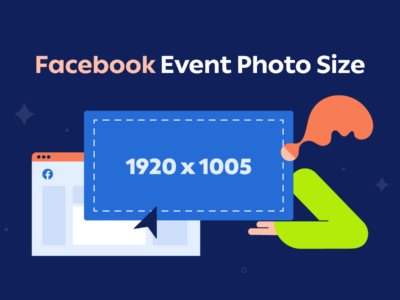“For sale: baby shoes, never worn.”
Legend has it that this is a famous six-word story written by Ernest Hemmingway himself.
Whether this is true or not, this one simple sentence turned into a masterclass in ad copywriting.
It’s short, captures attention, and leaves a lasting impression on the reader long after they turn the page.
This is the same kind of effect advertisers and marketers (like you and me) want when creating copy for their ads.
Whether you’re a professional copywriter with a decade of experience or someone who never wrote a line in their entire life, our guide will give 16 evergreen tips for writing killer ad copy using real-life examples that you can use as inspiration.
Table of Contents
What is ad copywriting?
Ad copywriting is the act of writing copy specifically for advertisements, including display ads, flyers, posters, billboards, social media ads, mobile ads, etc. The length of your copy depends on the amount of space you have on your creative, but in general, it should be very short, merely a few words.
The role of a copywriter is to create copy that is catchy, unique, and memorable enough to get your target audience to connect with your brand—whether it’s by clicking on the CTA, visiting your website, making a purchase, or following you on social media.
In my years of working in the industry, I found that copywriting is one of the most exciting yet challenging jobs in the field of marketing. It’s fun to play with words and develop ways to capture people’s attention with a single sentence. But it’s also extremely difficult to condense the 10-page description of a product in five words in such a way that it stands out amongst the myriad of ads a person sees in a day.
If the last part sounds intimidating, don’t worry. This guide will give you 16 tips and tricks to help you write ad copy that’s worth the clicks. I will show you ways you can structure your copy, what kind of magic words to include, and a couple of interesting methods you can try out to unleash your creativity.
But before we dive into them, there’s one important step you need to take first. Just like how you need to warm up your muscles before starting your cardio, there are a few boxes you need to check before you begin writing your ad copy.
Copywriting foundations
1. Know the hook of your product

I’m sure you have a favorite song. And I’m pretty sure it became your favorite because you couldn’t get a certain part out of your head, whether it was the chorus, an interesting verse, or the extremely catchy intro.
That part convinced you that this song is special, that it just has something that none of the other ones have, and it deserves a place in your playlist.
That’s the hook of the song.
And just like the hook of your favorite song, the hook of what you’re offering, whether it’s a product or a service, is instrumental (pun intended) for your brand. You need to be clear about what makes your product unique. What is it about it that makes it stand out and worth your target audience’s time and money? Why does it deserve a spot in their minds as well as their daily lives?
Once you know what makes your product unique, you will be able to focus on that hook and come up with numerous ways to emphasize it in your copy.
And one of the best ways to figure out the hook of your product is by taking the next step.
2. Study your competition

When you have a product or a service you want to get out into the world, it’s always important to look at what else is out there.
You want to know if someone else has already thought about your idea and if they did, how did they go about it? Is it similar to yours? Can you do something to make the product even better? These are important questions that need to be answered so you can have an easier time developing your product and your marketing plan.
For example, if you want to sell kitchenware, you need to check what other brands are out there and what you can offer that they can’t. Is it lower prices? Nicer designs? Better durability?
Knowing your competition will help you figure out the hook of your product better. And as discussed in the previous step, a good hook leads to a more focused copy (and hopefully more sales).
Besides, your target audience will compare you to your competitors, as well. They won’t just take your product and run with it. They will most likely put it in a list of options and come back later—if they do. So studying your competition can help you anticipate people’s questions or concerns.
3. Know your audience

Researching your target audience is a step that should never be skipped, just like stretching before working out.
We often come up with ideas for products or services that sound useful to us, but they’re not totally valuable for our audience. And if they are valuable, there could still be a feature or two that miss the mark.
Let’s go back to the kitchenware example. Maybe you want to sell measuring spoons that have a luxurious look and are more durable than those of other brands. But maybe your audience isn’t interested in measuring spoons. They would rather purchase mixing bowls. After all, the spoons can be quite useless if you don’t have bowls to put the carefully measured ingredients in.
You want to always be aware of your audience’s needs and how you can answer them. This can only be achieved through proper research and lots of communication.
Hand out surveys, check the social media profiles of your followers, review Google Analytics, contact your sales team for more input—there are tons of methods you can use to figure out your audience’s needs. Depending on your research plan, this step can take a few weeks or even months, but it’s imperative that you do it.
4. Know the medium and platform

Are you making print ads or display ads?
Are you advertising on Google, Linkedin, or Facebook?
Depending on the medium and platform you’re going to use, you’ll have to adjust the sizes of your ads, which in turn has an effect on your copy.
For example, here’s Google AdSense recommending using one of their five top-performing ad sizes for maximum results—all of them vary in sizes and shapes. Your text might look great on a large rectangle but not on a leaderboard. So now you have to choose between adjusting your copy for each ad or writing one copy that looks good on every single ad.
Here are Meta’s Facebook News Feed ad specifications. They include the maximum number of characters you can put in the primary text, headline, and description. For your ads to look clean in the newsfeed, you have to come up with a copy that is eye-catching and fits the given recommendations. LinkedIn has similar ad specs for sponsored content.
Remember that each platform can go through upgrades periodically, and their ad specifications can subsequently change. So make sure to keep an eye out for them.
If you decide to also dive into print ads, you want to add their sizes and placements to the equation, too.
5. Use headline-description-CTA template

If you’ve never written an ad copy before, one of the first things you might ask is how the structure looks.
The good news is that it’s easy as one-two-three. Literally.
As a rule of thumb, your ad copy should consist of three parts: headline, description, and CTA. All three of them have their own roles.
- Headline: grabs the attention of your audience;
- Description: introduces your product or service;
- CTA: short for “call to action”; invites your audience to gain something significant.
Consider these three as the skeleton of your ad copy that you can build your words on. Don’t be afraid to have fun and write multiple versions. Sometimes all you need to do is switch out one word to get a copy that converts.
Sometimes, you can skip the description if your headline is already descriptive enough. There can be times when you feel super inspired and come up with a headline so good it doesn’t need a description. However, for the most part, it’s better to keep all three parts. This way, you can focus on just making your headline a headline, rather than making it a headline as well as a description.
The CTA has to be included no matter what. Once you’ve captured your audience’s attention, you want to hang onto it. Nowadays, with so many ads flashing in front of our eyes, it’s very easy to lose people’s attention in a matter of seconds—so you always want to include the next step that keeps people engaged (and increases your CTR).
6. Handwrite all your ideas

If you Google “handwriting vs. typing,” you’ll receive about 13,400,000 results, the majority of which are articles debating which option is better.
The truth is, both of them have their benefits.
And when it comes to ad copywriting, you’ll definitely want to take advantage of handwriting.
Writing by hand allows your brain to slow down and think your ideas through. A clearer thought process helps you come up with more creative ideas, which can, of course, help you write an interesting ad copy you’ll be proud to publish.
With that out of the way, we’re about to get into the 16 tips for creating killer ad copy, so have your pen and paper ready, and let’s get creative.
Crafting the copy
1. Avoid clickbait
It may sound odd to begin a list of things you should do with something you should never do, but this one bears repeating.
Anything that is misleading, exaggerated, or alarming should be avoided when writing an ad copy. All these messages do is cause negative feelings for your audience and destroy the trust in your brand. It’s not worth risking these two for the sake of a few fast clicks.
Clickbait can be especially tempting when you’re just starting your business and when you’re just about to launch your new product. It can be quite satisfying to see the immediate buzz—but it dies down very fast and has lasting effects on your brand’s reputation.
So just don’t do it.
2. Focus on the benefits
Not the features.
It makes sense to be excited about all the cool things your product or service does. How different it is, how great it looks, how much easier it is to use than others.
The problem with this is that it places emphasis on the product when it should be on your audience.
Whether we’re talking about buying a new smartphone or signing up for a subscription service, people are rarely attracted to the fancy features. Instead, they’re attracted to the benefit it brings them. When your audience asks, “What’s in it for me?” you want to be able to give them a convincing answer.
But what if you were tasked with writing an ad copy for something that sounds boring, or at the very least, its benefits are just not captivating enough? Then you might find the next tip very useful.
3. Imagine life without your product or service
As the old saying goes, you never know what you have until it’s gone. A quick search on YouTube will show you hundreds of love songs about it.
This rings true in ad copywriting.
If you’re struggling to come up with captivating benefits for a product or service that will make people click the CTA, try taking it away.
Imagine what life would be like without your product or service. More specifically, what would your customer’s life be like? What would they be missing out on? What would they be struggling with that your product could fix?
By figuring out how much harder it would be without the thing you’re advertising, you will have an easier time coming up with huge benefits. And once you know the benefits, you’ll be able to focus your copy around them.
4. Speak with empathy
We hear a lot about how important empathy is not just at our jobs but in our lives. How much it matters to be able to empathize with your coworkers and how it’s an essential soft skill for team leaders and managers. How much easier it is to manage relationships with family, friends, and romantic partners by just being a little more empathetic.
It’s just as important to empathize with your target audience.
Your primary goal should always be to help them resolve a problem and/or satisfy a need. You want to put the focus back on them by reassuring them that what you’re offering will help. Empathize to emphasize.
Of course, in order to do that, you have to know your audience’s needs. Only then will you be able to formulate your words in such a way that it speaks to them.
Let’s take this Samsung ad offering one-year smartphone warranties as an example.
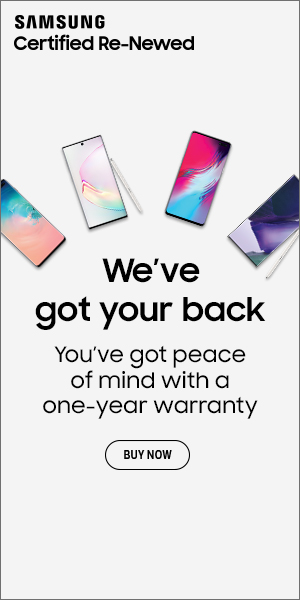
Notice how the copy starts with “We’ve got your back.” This ad anticipates people’s needs related to their smartphones and steps forward with reassuring words.
Of course, you don’t have to use these exact words to be empathetic and reassuring. You can also go ahead and address your audience’s needs and concerns in a different way.

First Midwest Bank does this simply but effectively by starting with a question that is already in people’s minds and offering them the solution.
Empathizing with your audience helps you offer the solutions they need and increase trust in your brand.
5. Write a six-word story
In the introduction, I brought up the famous six-word story commonly attributed to Hemmingway and how it’s mentioned in almost every copywriting class.
What if I told you that you have the chance to write a cool Hemingway-esque story, too?
Writing a six-word story of the product or service you’re advertising is a great exercise to get your creative juices flowing. It forces you to tell the essential information in a brief, catchy, and memorable way.
Since this is an exercise, don’t shy away from writing the most absurd, hilarious, or downright boring things. Sometimes you need to do a creative exercise 50 times before finding “the one” that gives you a fantastic idea. Why not have fun with it along the way?
6. Write an elevator pitch
Alright, maybe you’re not a fan of Hemingway and six-word stories.
But do you like movies?
An elevator pitch is a common concept in the film industry. The idea of it is that if you had only a few seconds to pitch your idea to a studio executive, from the moment you press the elevator button until the moment the doors open on the next floor, what would you say?
Just like a six-word story, an elevator pitch forces you to focus on only the essential information and challenges you to deliver it in a captivating way—enough so that the studio executive looks at you and says: “Tell me more.”
Just like in the case of the six-word story, don’t be afraid to have fun with this exercise. Let your creativity go, and you might just see a shiny idea you’ll be eager to use in your ad copy.
7. Open with a question
Nothing breaks the ice better than a good question.
It’s one of the quickest ways to get someone’s attention and get them to engage with you, so you’ll want to take advantage of it when you’re writing ad copy.
You do need to be aware of what sort of questions you’re opening with. You can’t ask something completely unrelated to what you’re trying to offer because that steps into clickbait territory. You also don’t want to ask invasive questions that do nothing but make your audience feel uncomfortable.
Instead, what you want to do is, for lack of a better word, read their minds. You can do this by either asking a question they already have or addressing one of their needs or concerns in the form of a question. Best case scenario, the response will sound something like: “Huh, yes, I actually was thinking about that. What do you have for me?”
Let’s look at the following examples from Spotify, the Isenberg School of Management, and United Healthcare.

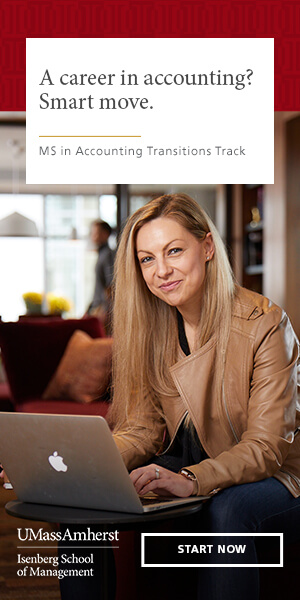

Notice how all three of these ads promote completely different services in different industries for completely different audiences. Yet each one manages to capture interest just as well as the other. They all open conversations with their audiences using questions that reflect their needs.
8. Start with action verbs
If questions were the best ice breakers, the second-best ones are action verbs.
Action verbs have the power to stir curiosity because they prompt people to act. You’re inviting your audience to do something, to join an activity that has a good outcome for them. These outcomes can be discovering an innovative product that will change their lives, finding out about a service that’s highly useful, or meeting a brand that aligns with their values.
Keep in mind, though, that not every action verb in existence is good. You don’t want to start your ad copy with words like “stop,” “run,” or “listen.” These are alarmist and clickbait-y.
Instead, you want to pick action verbs that imply there’s something really good to gain, like:
- Discover;
- Experience;
- Enjoy;
- Claim;
- Unlock;
- Feel;
- Earn;
- Receive.
Check out the following examples from Chase Bank, Calvin Klein, and HBO Max:
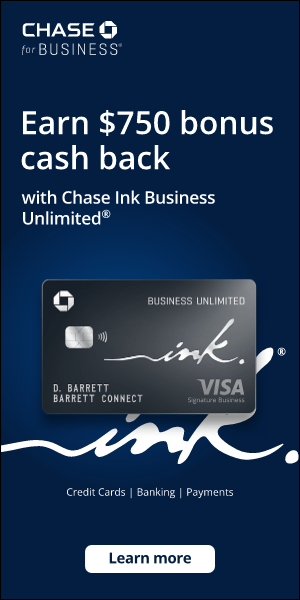
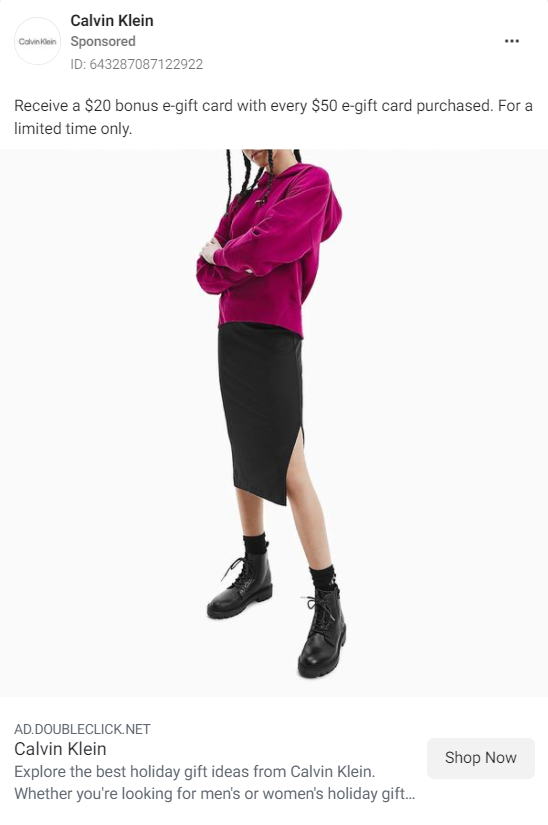

9. Include numbers
Have you ever been told: “I won’t believe it until I see the numbers?”
Or maybe it sounded more like: “I have to see the numbers first.”
We are wired to trust numbers. Whether we are talking about a country’s birth rates or the percentage of people who prefer green tea over coffee, numbers give us a clear picture of what is going on around us. Seeing the numbers allows us to ponder a subject and make a better judgment.
So why not use them in ad copywriting?
If you’re offering a discount, don’t just tell people there’s a discount. Tell them exactly how much it is. Don’t just say that most people choose your services. Tell them what percentage of the population exactly chooses you. Like in the examples below from American Express and Nokia:
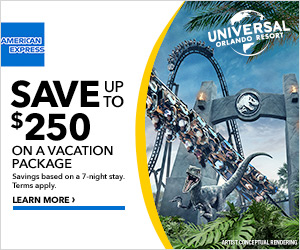
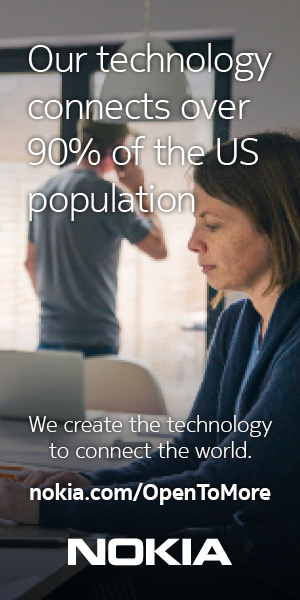
And yes, even if the only number you can offer is 1, as long as it implies something positive for your audience, you should put it in your copy. Like how Shutterstock did it:

10. Use “you” and “your”
It goes back to one of the most basic rules in marketing: instead of talking to an entire crowd, talk to one person from that crowd.
The word “you” and variations of it make your message more personal. A more personal message will make your audience feel more special. They will feel like you see them and they’re not just part of the crowd.
Just look at these examples from Too Faced Cosmetics and Oreo:
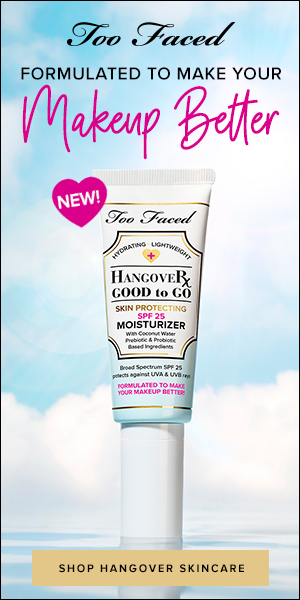
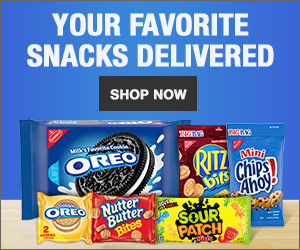
The rule of thumb is to check whether you can replace “the” with “you” or “your” in a way that makes sense and see if it has a stronger effect.
Below I took one of the templates from Creatopy and did exactly this. Notice how just by switching one word, the copy sounds more personal.


Would you agree that the second version is more clickable?
11. Word mirror
As the name suggests, word mirroring is when you say back the words that someone uses. It’s an extremely useful technique in marketing when you want to address your audience’s needs and capture attention directly.
There are two ways you can mirror your audience’s words.
The first way is to gather all the reviews and study what words your customers and clients use most. See what are the most common things they’re satisfied with and advertise them.
Want an even easier way? Just use your favorite reviews as your copy, like what CeraVe did in their ad:
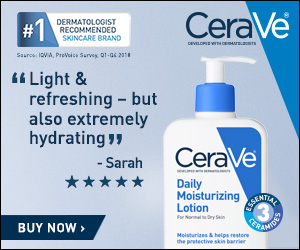
The second way you can word mirror is by doing some good ol’ keyword research. Yes, it turns out they’re not just good when you need to make your articles SEO-friendly. They spoon-feed you what your audience is looking for, so it’s worth including them in your ad copy as much as possible.
12. Unleash your inner poet
You don’t need to be Shakespeare, Poe, or Angelou to write something with a nice ring.
All you need is three small tricks and a huge love for words:
- Puns
- Rhymes
- Alliterations
Puns may not be everyone’s cup of tea, but if you use them wisely, even the neigh-sayers will chuckle.
Just look at what Ben & Jerry’s came up with:
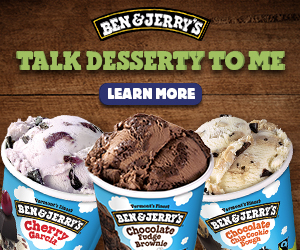
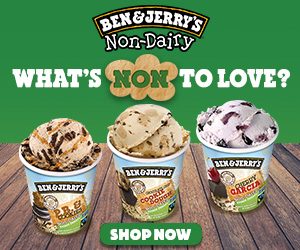
Rhymes are a fantastic trick to give your ad copy a pleasing and memorable flow. Use them wisely, and your target audience will be singing the same song.
Some of the best examples of this come from Starbucks, Oreo, and SugarBearHair:
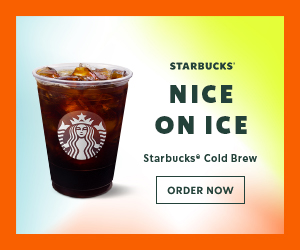
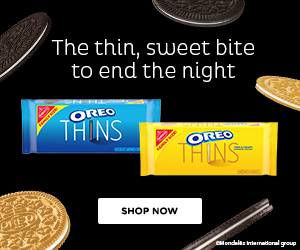

Remember, the endings of the words don’t need to be written exactly the same way to create a rhyme—but they do need to sound the same.
Alliterations work just like rhymes, giving your copy a nice rhythm.
Once again, Starbucks takes the cake:
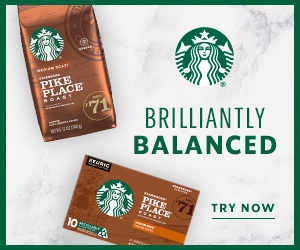
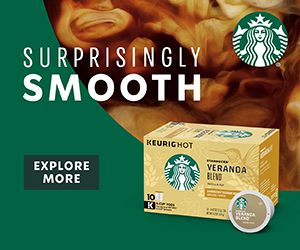
13. Tap into the five senses
You may have heard of speaking to your audience’s emotions but have you heard of speaking to their senses?
Sensory words have the power to conjure images that we can feel. Why just see a word when you can also hear, smell, touch, and taste it?
This will make your audience experience your product before they even get their hands on it, thus raising the anticipation and chances of saying yes to it.
Check out this tempting description from McDonald’s:
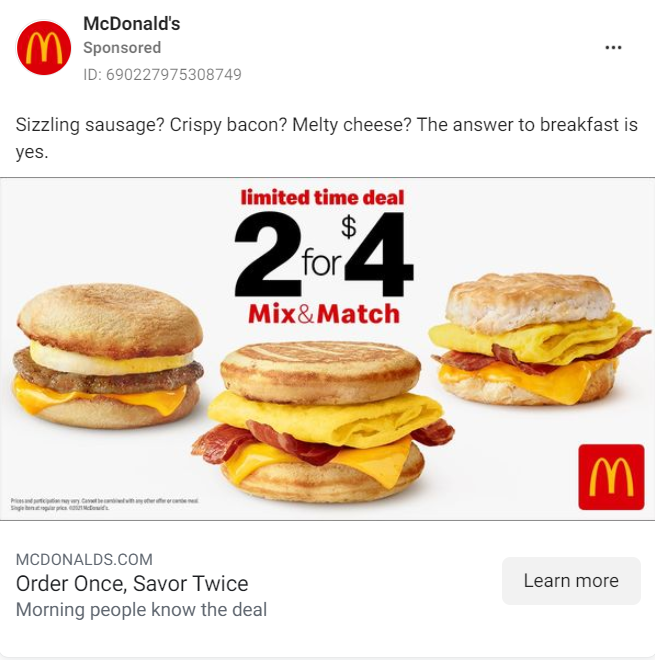
So next time, instead of just saying something is “tasty,” try going into more detail by saying:
- Caramelly;
- Sugary;
- Crunchy;
- Juicy;
- Creamy.
Instead of describing something as “nice to the touch,” say:
- Fluffy;
- Velvety;
- Satin;
- Silky;
- Smooth;
- Melty.
Something that “smells nice” can be:
- Lemony;
- Fruity;
- Floral;
- Rich;
- Fresh.
When something is “eye-catching,” go with:
- Bright;
- Sparkling;
- Shiny;
- Lacy;
- Glowing.
And when you’re advertising something that “sounds good,” see if it’s:
- Melodious;
- Purring;
- Clear;
- Hushed.
14. Connect with the ego
After speaking to people’s emotions, and probably their senses, it’s a good idea to try and reach their ego, too.
We tend to associate the word with expressions like “having a big ego,” but the ego itself is not as negative as it is often perceived. It simply has to do with self-esteem, the belief that you’re important and that you deserve to feel special.
So why not validate your audience’s emotions and make them feel special and important?
If you’re wondering how this can be done in only a couple of words, these examples from Pandora Jewelry, Samsung, and PremiumBeat might inspire you:
This one from Pandora is particularly clever because it also taps into another natural attraction we all have: stories. This ad takes that up a notch and places emphasis on “your” story. The idea is that you’re in control of your own story, and you have the power to say it—or wear it—as you wish. That’s a pretty nice ego booster.
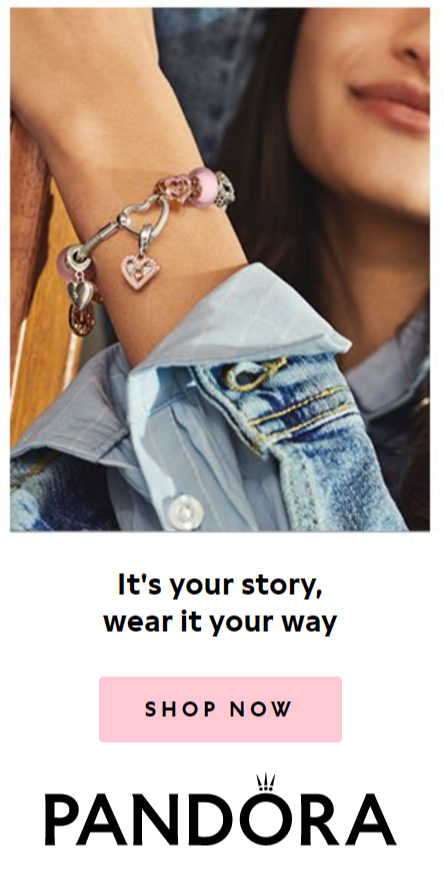
Samsung’s ad says that an idea as big as yours deserves a big screen. Once again, you deserve this product because you’re special.

PremiumBeat’s ad plays with the idea of exclusivity. They are very selective about the entries they get because you deserve something extra special. The standards are so high because you deserve only the best quality music for your projects.
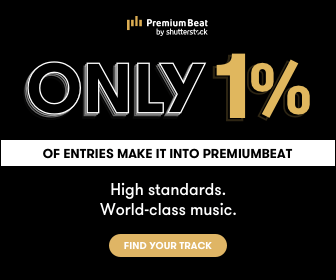
Notice how all of these examples convey the notions of “special” and “deserve” without outright using those words. That’s because they don’t have to. They are saying just enough words to let the audience connect the dots. A copy that allows you to think, even for just a couple of seconds, is more impactful and memorable.
15. Take advantage of FOMO (Fear Of Missing Out)
We love feeling special, but sometimes, we also want to be part of the crowd.
And FOMO proves that.
How many times have you checked out a TV show or a movie simply because everyone else was talking about it? When was the last time you were tempted to read a book from the bestsellers section?
FOMO is powerful, and with the right words, you can leverage it.
Make your audience curious about your product and service because they want to know what the hype is all about. Have them wonder if there is something great that they’re missing out on, which will prompt them to click that CTA button to find out more (and possibly make a purchase.)
I think cosmetics brands, in particular, really learned how to leverage the power of FOMO well. Take a look at these ads from NYX, Urban Decay, and Glossier:
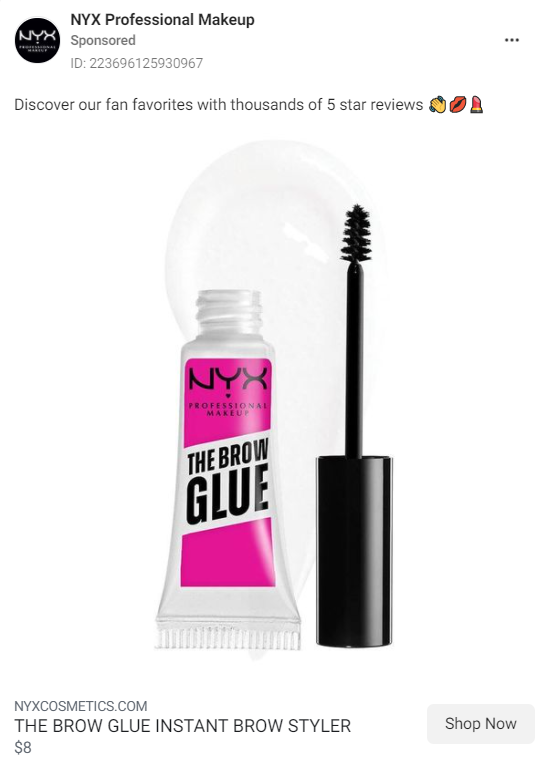
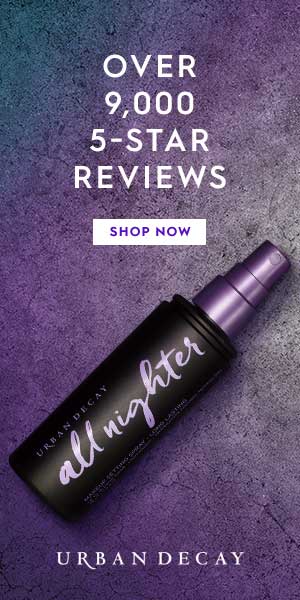
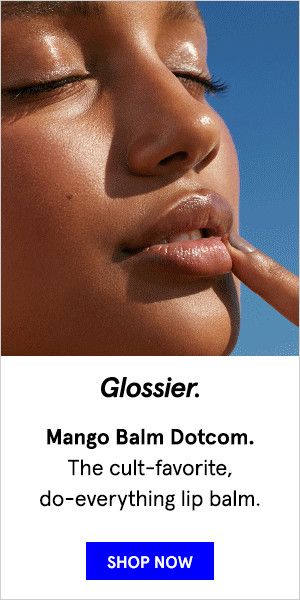
Using words like “fan favorites” or “cult-favorite” really cements the idea that you’re talking about a product that is hyped up for a good reason. And if you add a number to your copy that specifies how many people were satisfied with it, like how Urban Decay’s ad specified the overwhelming number of 5-star reviews, you can strengthen your argument even more.
16. Be topical and relevant
To be topical means to reference or discuss a topic that is relevant and/or important in relation to current events.
Being topical can effectively entertain your audience enough that they give you extra clicks and shares, and with a little luck, extra conversions.
But it’s one of the trickiest things to get right.
If you want to be topical, you need to make sure that the current event you want to reference can seamlessly blend into your message. Your audience can tell if you’re referencing something just for the sake of making a reference, so make sure that whatever copy you come up with does not sound forced.
You also need to make sure that you get the timing right. Trending topics are constantly cycling through the revolving door. Your audience might be bored of a topic by the time you publish your ad, so you need to ensure that your ad copy is ready to be published in a short amount of time.
Most of the time, when people talk about a topical ad, they usually envision ads that reference political events. Although these can be hot topics, they’re not the only type of subjects you can pick.
You can go for a widely celebrated holiday, like what Fanta did during Halloween in 2021, or even the cold weather, as per Taco Bell’s example:

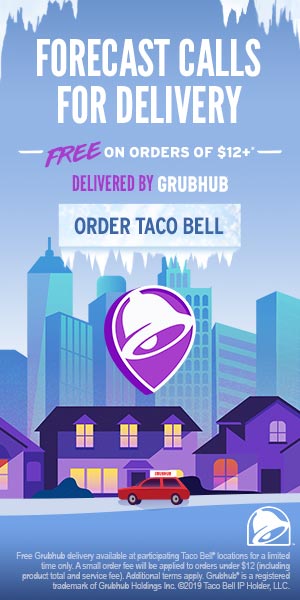
Tips & Tricks
- Be Conversational:
Write as if you are having a one-on-one conversation with your reader. This builds a connection and makes your copy more relatable. - Use Active Voice:
Active voice makes your writing more direct and dynamic. It helps convey a sense of urgency and action. - Leverage Social Proof:
Include testimonials, reviews, or case studies to build trust and credibility. - Create a Sense of Urgency:
Use time-sensitive language to encourage immediate action. Phrases like “limited time offer” or “act now” can boost response rates. - Personalize Your Copy:
Use the reader’s name or other personalized elements to make the ad feel more tailored to them. - Experiment with Different Formats:
Try different ad formats such as video, carousel, or interactive ads to see what resonates best with your audience. - Utilize Visuals:
Complement your copy with strong visuals. Images and videos can enhance the message and grab attention.
FAQ
How Do You Know Your Ad Copy Works?
After a couple of intense brainstorming sessions and probably a gallon of coffee, you finally came up with a good chunk of copies you can use in your ads.
The honest answer is that until you publish your ads, you’ll never know for sure.
You may find that the ad you were most sure about gets less thumbs up than the other one. Or, on the contrary, the ad you had the most fun writing ends up receiving the most appreciation.
When you write ad copy, your most important goal is to write something that resonates with your audience. Something that will capture their attention and make them remember you long enough to click on your ad and hopefully make a purchase. But you will never know what your audience likes unless you receive feedback from them—and an A/B test helps you get just that.
How do I test different versions of my ad copy?
Use A/B testing to compare different versions of your ad copy. Tools like Google Optimize and Facebook’s split testing features can help you gather data on which version performs better.
What makes ad copy effective?
Effective ad copy is clear, concise, and directly addresses the audience’s needs. It uses a strong headline, focuses on benefits, and includes a compelling call to action.
How long should my ad copy be?
Ad copy should be as long as necessary to convey your message effectively but as short as possible to maintain the audience’s attention. Focus on clarity and brevity.
What metrics should I track to measure the success of my ad copy?
Key metrics include click-through rates (CTR), conversion rates, and engagement levels. These indicators help you understand how well your ad copy is performing.
Conclusion
There was a time when we only saw a handful of poster ads here and there as we walked down the street.
Now those ads have gone digital, and we see them on our screens even more often than on the street.
And because they’re everywhere we look, it’s now harder and harder for advertisers and marketers to make people stop, for just one moment, and convince them to listen.
But with these evergreen tricks, you might just be able to make your audience listen not only for a moment but for a much, much longer time. Play with them, mix them up, and always, always let your creativity shine.
Are you going to try out any of these tricks? Which one was your favorite?

